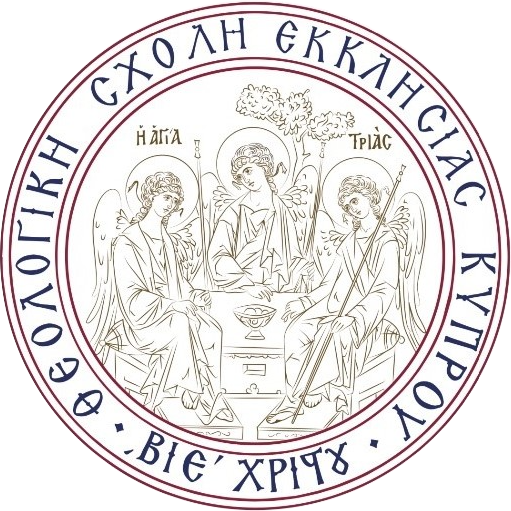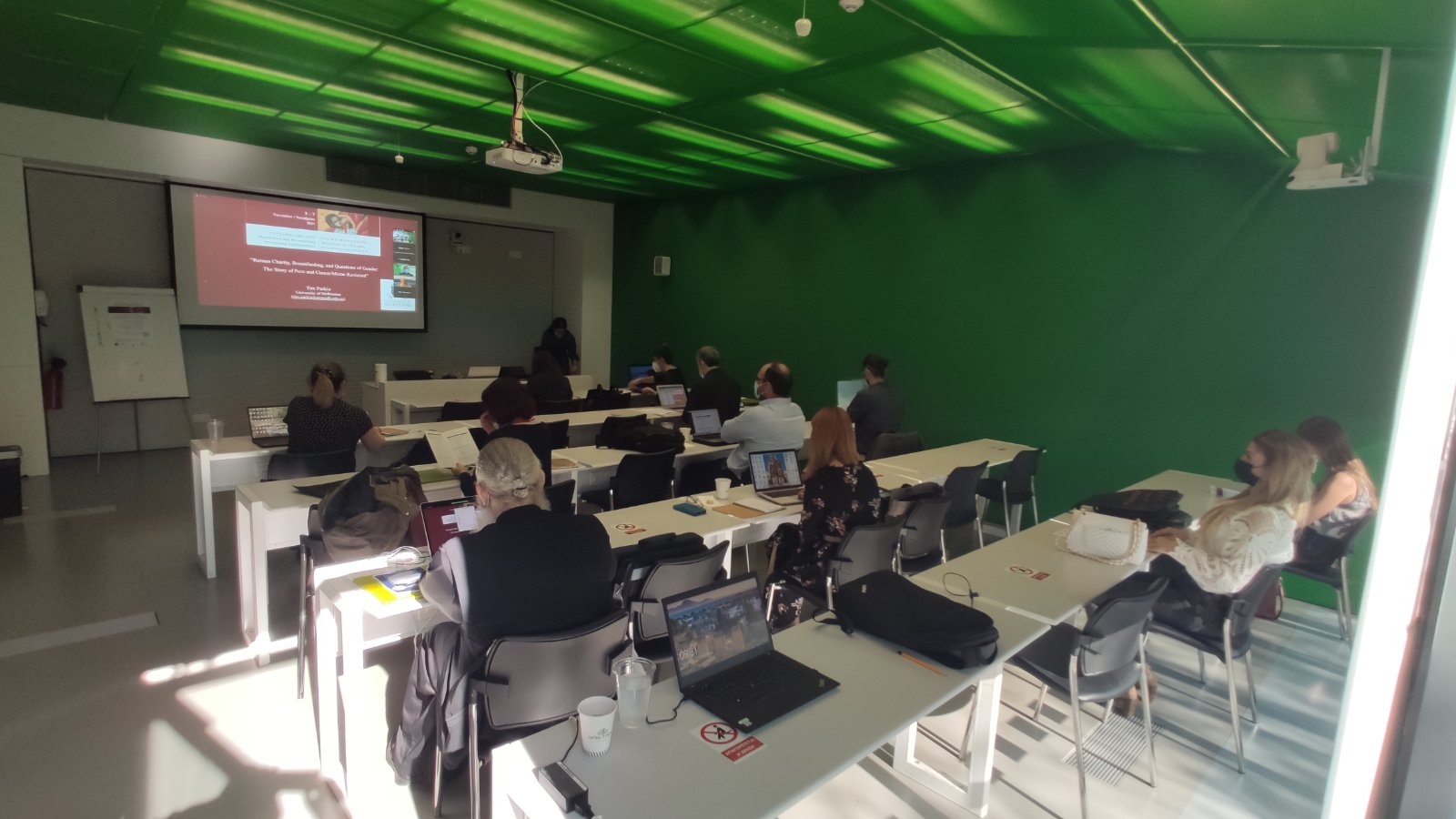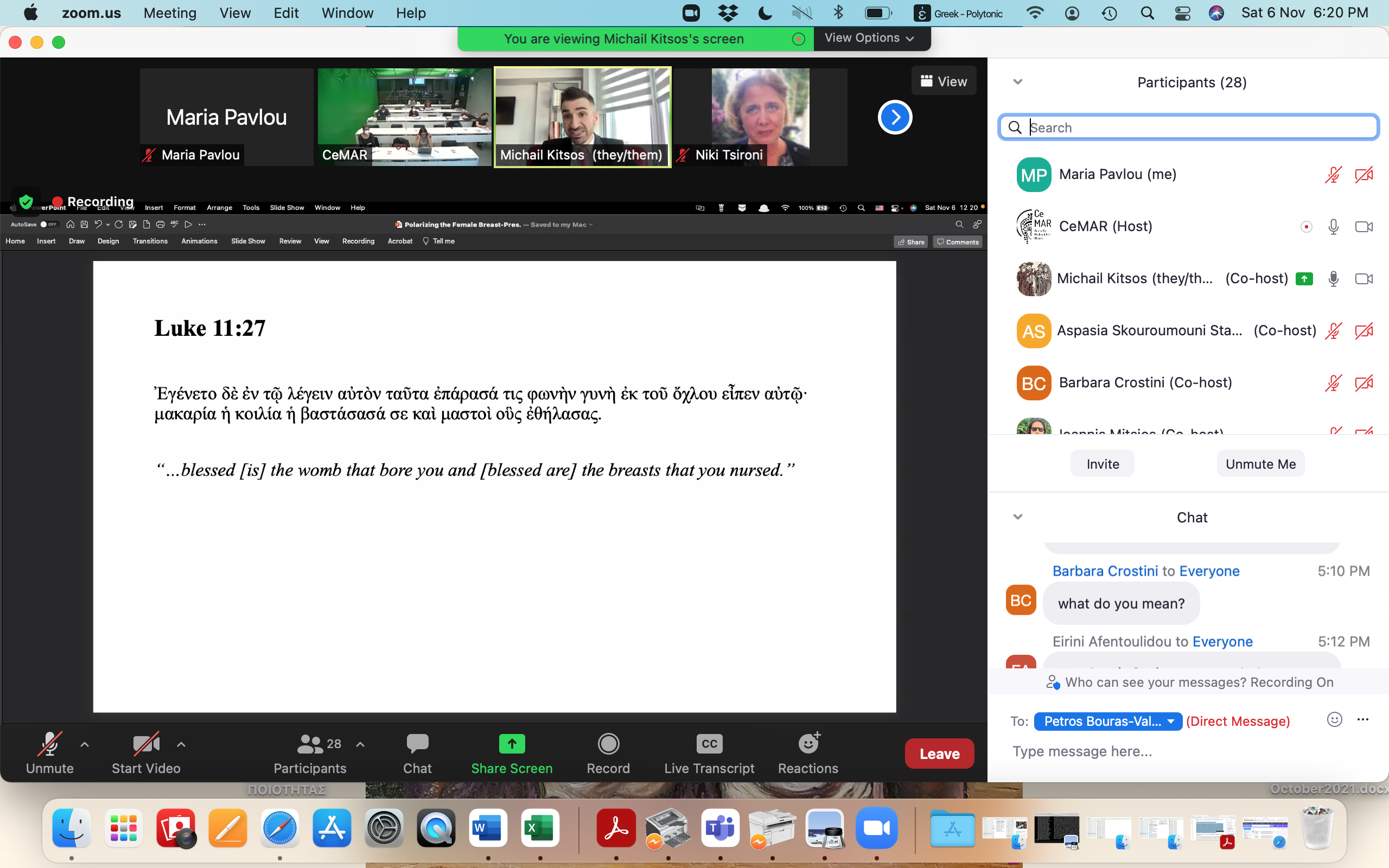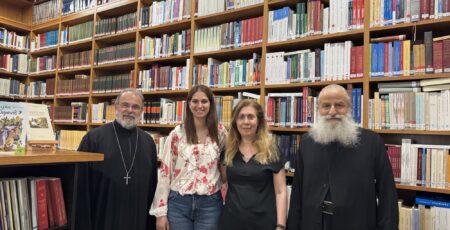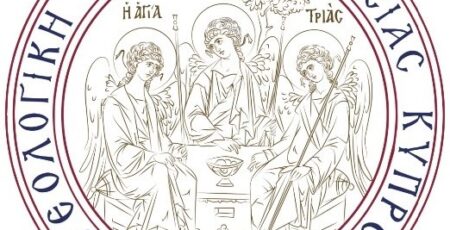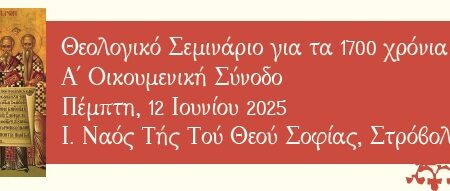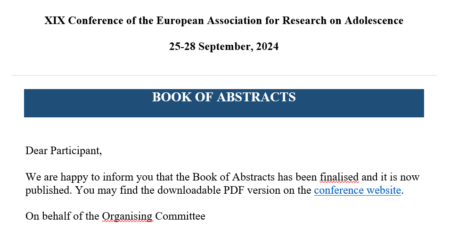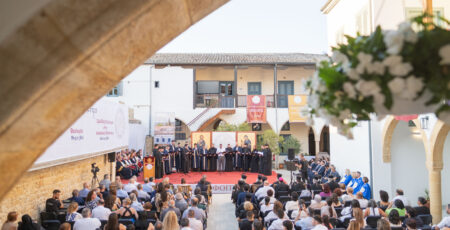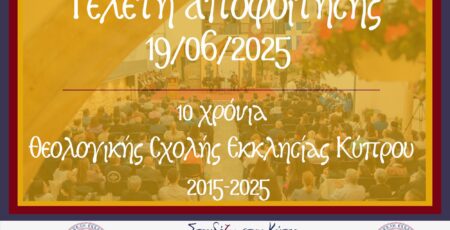Συμμετοχή δύο μελών ΔΕΠ της ΘΣΕΚ στο Διεθνές Συνέδριο Lactating Breasts: Motherhood and Breastfeeding in Antiquity and Byzantium
Ο Αρχιμ. Γρηγόριος Ιωαννίδης, Επίκουρος Καθηγητής Λειτουργικής, και η Μαρία Παύλου, Επίκουρη Καθηγήτρια Αρχαίας Ελληνικής Γλώσσας και Γραμματείας, συμμετείχαν με εισηγήσεις στο Διεθνές Επιστημονικό Συνέδριο Lactating Breasts: Motherhood and Breastfeeding in Antiquity and Byzantium, το οποίο πραγματοποιήθηκε σε υβριδική μορφή από τις 5 μέχρι τις 7 Νοεμβρίου 2021 στο Πανεπιστήμιο Κύπρου. Στο συνέδριο συμμετείχαν 28 ομιλητές από 11 διαφορετικές χώρες. Στην εισήγησή του ο Αρχιμ. Γρηγόριος Ιωαννίδης επικεντρώθηκε στις ευχές που απαντούν στη λειτουργική παράδοση της Ορθόδοξης Εκκλησίας και στα κυπριακά χειρόγραφα Ευχολόγια για τη μητέρα και το παιδί από την 1ημέχρι την 40η μέρα της γέννησης. Η εισήγηση της Μαρίας Παύλου περιστράφηκε γύρω από την εικόνα του γαλακτοφόρου μαστού του Θεού Πατέρα που απαντά στο 1ο βιβλίο του Παιδαγωγού του Κλήμεντος του Αλεξανδρέα.
Περιλήψεις εισηγήσεων
Αρχιμ. Γρηγόριος Ιωαννίδης
Mother and Newborn Child: From the 1st Day of Birth to the 40th in the Liturgical Tradition of the Orthodox Church and in the Cypriot Euchological Manuscripts
Nowadays, the liturgical tradition and practice of the Orthodox Church knows three rites dedicated to the mother and the newborn infant: the 1st, 8th, and 40th day of birth. The miracle of life –conception, pregnancy, and birth – is a timeless world-historical existential event. The birth of a child, the transformation of the couple into ‘parents’, and the acquisition of a descendant is a cause of God’s glorification and thanksgiving. At the same time, a warm request and entreaty is made for divine help in the physical, mental, and spiritual growth and development of the infant but also for the protection of the precious divine gift from above until adulthood. In both the Old and New Testaments, the birth of a child, motherhood, and breastfeeding are top events of human life and are surrounded with great attention, care, affection, and love. This is why important celebrations of the liturgical year and the festive cycle of the Orthodox Church refer to the conception, pregnancy and birth of Christ, Virgin Mary, and John the Baptist. As indicated through its euchological sources, the liturgical tradition of Constantinople knows and testifies to only one prayer dedicated to the newborn infant for the 8th and the 40th day of birth respectively. The Churches of the Middle East testify to a great diversity and liturgical richness with prayers that concern both the mother and the newborn child on the 1st, 8th and 40th day after birth. Our research pays attention on the rites and prayers of the 1st, 8th, and 40th day after birth, as these are preserved in unknown Cypriot euchological manuscripts. Τhis paper’s main objective is to provide an overview of the liturgical evolution of the abovementioned rites and prayers throughout time by using unknown Cypriot liturgical sources and examining the liturgical orientation of Cypriot euchologies. The attempted analysis seeks to highlight the liturgical and theological wealth of the Orthodox Church that embraces the event of birth and its main timeless protagonists: the mother and the newborn child.
Μαρία Παύλου
Clement of Alexandria and the Breast of God the Father
Lactation and breastfeeding are notions related almost exclusively to women, either the mother who gives birth or a nurse/surrogate mother who undertakes the newborn’s care. This paper focuses on a passage from Clement of Alexandria, a Christian author of the 2nd–3rd c. CE, where lactation and breastfeeding are used metaphorically and are associated with the figure of the father. In his book titled Paedagogus, Clement depicts the church as a surrogate mother that maintains access to the milk of the Word (Λόγος), which in turn it is suckled from the breast of God the Father. The metaphor is striking, not least because fathers are not typically associated with breastfeeding, but also because the imagery brings to the fore a double breastfeeding. My intention in this paper is to provide a close reading of Clement’s passage trying both to identify similar metaphors in previous authors and to examine if the metaphor of Christ as Milk suckled from the breast of God by the Church was taken up in the same – or in a somewhat different form – by the Church Fathers.
